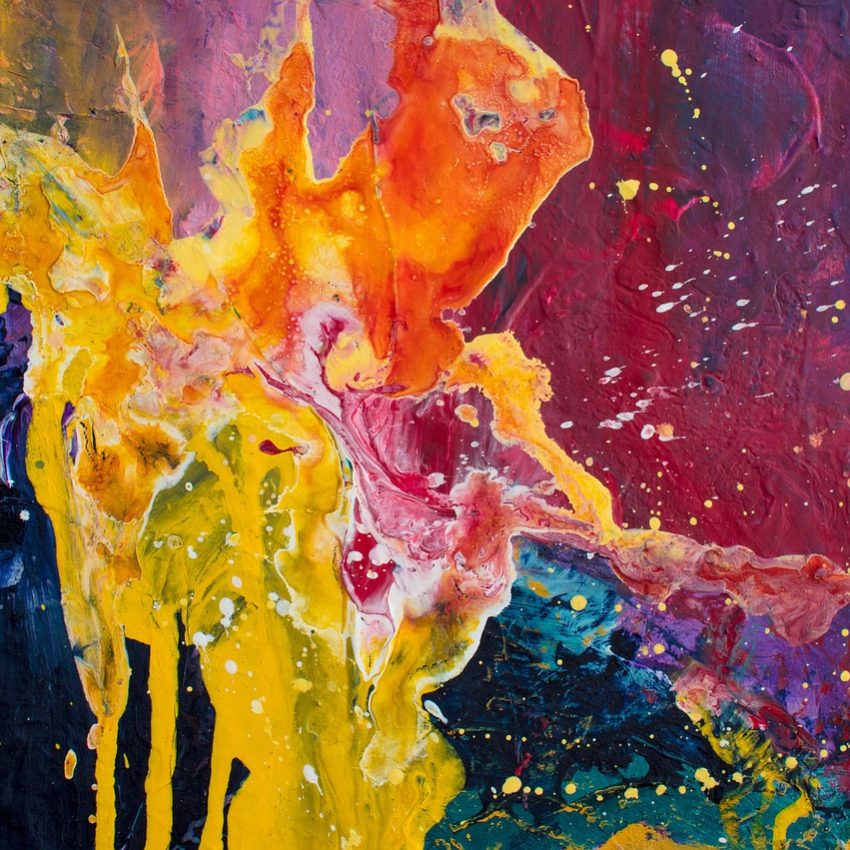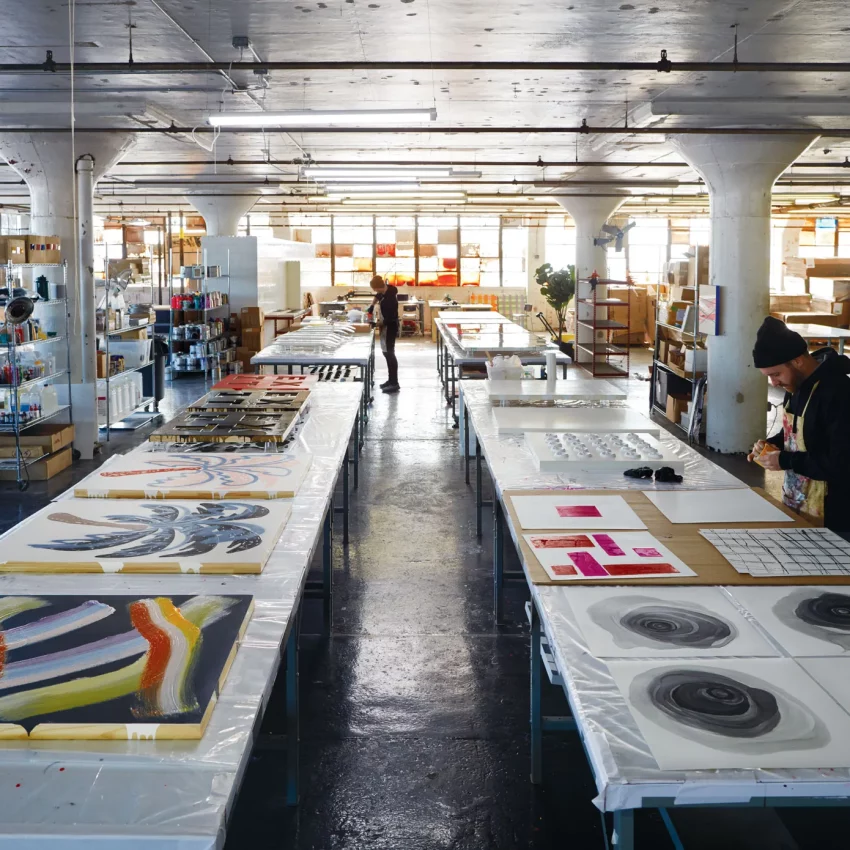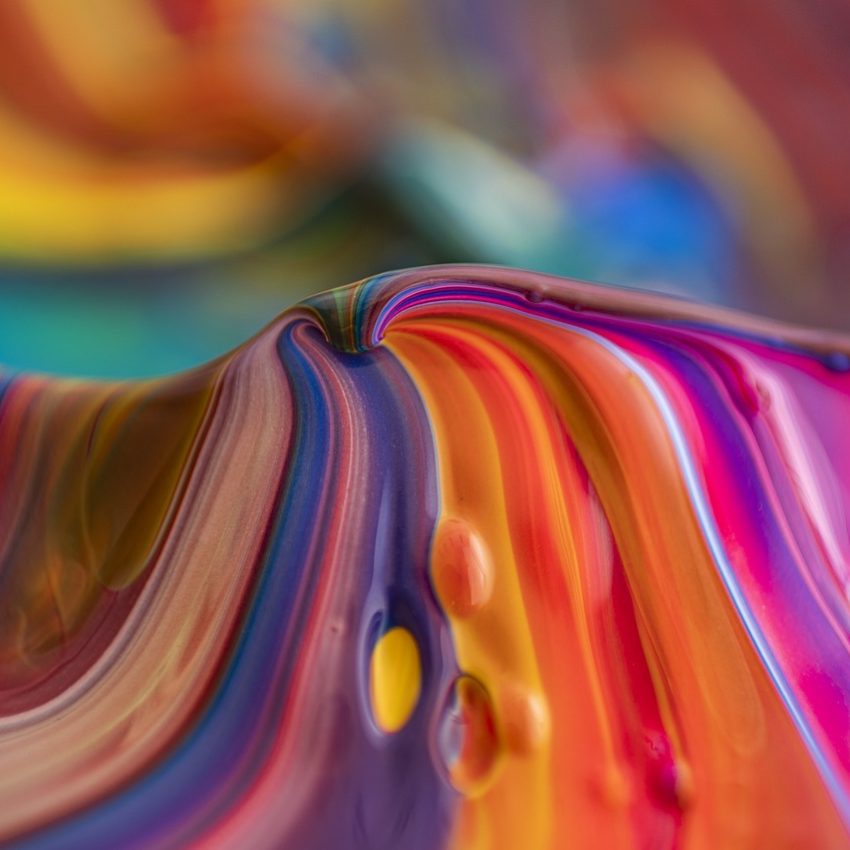Complementary Colour & The Colour Wheel
Understanding colour theory, colour combination and colour palette
Introduction: Understanding complementary colors in design
Complementary colors, a fundamental concept in design, involve pairing colors that sit opposite each other on the color wheel. This juxtaposition creates a striking visual contrast that can bring energy and vibrancy to a design. By understanding the relationship between complementary colors, designers can create dynamic compositions that draw the viewer’s eye and evoke specific emotions or moods.
When used effectively, complementary colors can enhance readability and create a sense of balance within a design. They have the power to amplify each other’s intensity when placed side by side, adding depth and dimension to the overall aesthetic. Experimenting with complementary color schemes allows designers to play with light and shadow, creating visually stimulating experiences for viewers. By mastering the art of using complementary colors thoughtfully, designers can elevate their work to new levels of impact and creativity.
History of Colour Theory
Throughout history, the impact of colors on each other has been observed and documented. In his essay “On Colors,” Aristotle noted that when light interacts with another color, it assumes a different hue.
Saint Thomas Aquinas remarked on how the appearance of purple varied when placed next to white or black, and the striking effect of gold against blue compared to white.
Renaissance figure Leon Battista Alberti recognized harmony between certain color pairs, such as red–green and red–blue, while Leonardo da Vinci highlighted harmonies between exactly opposed colors.
In 1704, Isaac Newton, in his treatise on optics, introduced a circle illustrating a spectrum of seven colors. He observed that specific colors around the circle opposed each other, providing the greatest contrast and thus forming complementary pairs. Newton identified pairs such as red and blue (modern cyan), yellow and violet, and green and a purple close to scarlet.
In the late 18th century, Benjamin Thompson, Count Rumford, introduced the term “complement” to describe colors that, when combined, produce white. He noticed that certain colors appeared in the shadow of others under specific lighting conditions, theorizing about their harmonious relationships.
In the early 19th century, Johann Wolfgang von Goethe and Thomas Young presented their color theories. Goethe proposed yellow and blue as primary colors, with red emerging from their opposition.
He described sets of complementary colors that demanded each other’s presence, highlighting how these complementary pairs are opposite on the color wheel. Young’s experiments demonstrated that white light could be created from combinations of just three colors—red, green, and blue—laying the foundation for additive colors and the RGB color model used in modern technology.
David Brewster and Hermann von Helmholtz further explored color theory, resolving debates about primary and complementary colors. Eugene Chevreul’s studies on complementary colors’ arrangement and brightness enhancement, detailed in his 1839 book, gained widespread attention and influenced artists like Georges Seurat and Vincent van Gogh.
These advancements in color theory, spanning centuries and continents, have enriched our understanding of how colors interact and have profoundly influenced various fields, from science to art.
Colour Theory and Modern Colour Theory
Color theory, a practical combination of art and science, is utilized to determine harmonious color combinations. This theory finds its basis in the color wheel, which was invented by Isaac Newton in 1666. Newton mapped the color spectrum onto a circle, establishing the relationship between colors. Artists and designers use color harmonies derived from the color wheel to create specific looks or moods.
By adhering to the rules of color combinations, one can find pleasing color schemes. There are two main types of color wheels: the RYB (red, yellow, blue) wheel, commonly used by artists for paint mixing, and the RGB (red, green, blue) wheel, designed for digital applications like computer screens. Canva’s color wheel, for instance, operates on the RGB model, suited for online use. This integration of traditional color theory with modern advancements allows for a comprehensive understanding of color’s properties, psychological effects, and cultural associations.
Colour Models and Spaces
While traditional color theory primarily focused on physical pigments and mixing, modern color theory incorporates digital color models like RGB and CMYK, essential for digital media and printing. Understanding digital color spaces such as sRGB and Adobe RGB enhances the precision and consistency of color reproduction across various devices and platforms.
Colour Psychology and Communication
Both traditional and modern color theory acknowledge the psychological impact of colors on human perception and behavior. While traditional color theory explored cultural symbolism and associations, modern color theory leverages this understanding in branding, marketing, and user experience design to communicate messages effectively in the digital realm.
Colour Harmony and Design Principles
Principles of color harmony remain foundational in both traditional and modern color theory. Whether applied to physical artworks or digital designs, concepts like complementary, analogous, and triadic color schemes guide the creation of visually appealing compositions and user interfaces.
Colour Mixing and Technology
Traditional colour mixing techniques using physical pigments are complemented by digital color mixing methods in modern color theory. Digital tools and software enable precise control over colour blending, facilitating the creation of vibrant and realistic digital artworks and designs.
Colour in Science and Technology
The scientific understanding of color interactions and phenomena, such as light refraction and color perception, underpins both traditional and modern color theory. However, modern color theory extends into fields like optics, physics, and computer science, where knowledge of color principles informs advancements in display technology, image processing, and data visualization.
Cultural Influences and Trends
Traditional color theory considered cultural connotations and historical trends in color usage. Modern color theory builds upon this foundation by incorporating contemporary cultural influences and market trends, particularly in industries like fashion, interior design, and branding. Staying attuned to evolving color preferences ensures relevance and effectiveness in visual communication and design practices.
In essence, the synthesis of traditional color theory with modern advancements enables practitioners to navigate the complexities of color across diverse mediums, technologies, and cultural contexts, empowering them to create compelling visual experiences that resonate with audiences in today’s digital age.
Overall, modern color theory combines traditional principles with contemporary knowledge and technology to guide the effective use of color in various creative and practical applications.
.
The Colour Wheel and How it Works
The color wheel is a fundamental tool in the world of art and design, serving as a visual guide to understanding how colors interact with each other. At the heart of the color wheel are three primary colors – red, blue, and yellow – from which all other colors are created through mixing. As we move around the wheel, secondary and tertiary colors emerge through combinations and variations of these primary hues.
Understanding the relationships between different colours on the wheel, such as complementary pairs and split complementary schemes, can help us create a powerful visual impact in our artwork or designs.
Complementary colours, for example, sit directly across from each other on the color wheel and when used together, they create dynamic contrast and vibrancy. This juxtaposition of opposites can evoke strong emotions and draw attention to specific elements within a composition. By harnessing the principles of the color wheel, artists can effectively manipulate moods, aesthetics, and even direct viewers’ focus in their work.
In addition to the primary colors of red, blue, and yellow, the color wheel also introduces secondary colors, which are created by mixing equal parts of two primary colors.
.
The three secondary colors are:
Orange: Formed by mixing red and yellow, orange sits between these two primary colors on the color wheel. It possesses qualities of both its parent hues, appearing warm and vibrant. Orange is often associated with energy, enthusiasm, and creativity.
Green: Created by combining blue and yellow, green occupies a central position on the color wheel between its constituent primary colors, green and blue. It is a versatile color that symbolizes nature, growth, and harmony. Green can evoke feelings of tranquility and balance.
Purple: Produced by blending red and blue, purple is located between these primary colors on the color wheel. It is often associated with luxury, royalty, and spirituality. Purple can convey a sense of mystery, sophistication, and creativity.
Secondary colors play a crucial role in color theory and design, as they expand the palette beyond the primary colors, offering a broader range of hues to work with. These colors can be combined with primary or tertiary colors to create harmonious compositions or striking contrasts, depending on the desired effect. Understanding the relationships between primary and secondary colors on the color wheel enables artists and designers to make informed choices when selecting color schemes and creating visual compositions.
What are complementary colours?
Complementary colors refer to pairs of colors that, when combined or mixed, neutralize each other, resulting in a grayscale color such as white or black. When placed adjacent to one another, they produce the most intense contrast between the two colors, enhancing their visual impact. These pairs are also known as “opposite colors”.
What makes complementary colors so visually appealing is their ability to balance each other out while creating a sense of harmony. Artists often use these color combinations to evoke powerful emotions or draw attention to specific elements in their work. By understanding the principles of complementary colours, designers can create captivating visuals that capture the viewer’s attention and leave a lasting impression, especially in how they choose a color to pair.
Complementary colours
Complementary colors are pairs located on opposite sides of the color wheel. This pairing creates a striking contrast, making the colors appear brighter and more prominent when used together.
Monochromatic
A monochromatic color scheme consists of three variations—shades, tones, and tints—of a single base color. This creates a subtle and conservative combination, offering versatility in design projects for achieving a harmonious aesthetic.
Analogous
Triadic
Tetradic
Warm and Cool Colours
Shades, tints, and tones
Shades, tints, and tones offer nuanced variations of a base hue, achieved by incorporating black, white, or grey into the color composition.
Shade: By infusing black into a base hue, a shade emerges, imbuing the color with depth and richness, a key tactic in subtractive color theory. These darker iterations can evoke a sense of drama, although excessive use may overpower a composition.
Tint: Introducing white to a base hue produces a tint, resulting in a lighter, less intense version of the original color, a concept critical to achieving the perfect balance in a split complementary color scheme. Tints serve to soften vivid color schemes, balancing their intensity and enhancing visual harmony.
Tones: Combining black, white, or grey with a base hue creates tones, subtle iterations that offer a nuanced interpretation of the original color. Unlike tints, tones retain the essence of the base color while introducing complexities and subtleties, adding depth and sophistication to the palette.
Hue, Saturation, and Luminance
Hue, saturation, and luminance are fundamental components of color that contribute to its appearance and perception.
Hue refers to the pure color of an object, determined by its dominant wavelength in the visible spectrum. It is what distinguishes one color from another on the color wheel, such as red, blue, or green.
Saturation, also known as intensity or chroma, measures the purity or vividness of a color. A highly saturated color appears vivid and vibrant, while a desaturated color appears more muted or washed out, demonstrating the significance of the color picker tool in adjusting saturation for the desired effect. Saturation is determined by the amount of grey present in the color; the more grey, the lower the saturation.
Luminance, also referred to as brightness or lightness, describes the perceived intensity of the light emitted or reflected by a color. It determines how light or dark a color appears to the human eye, regardless of its hue or saturation. Colors with higher luminance appear brighter, while those with lower luminance appear darker.
How to use complementary colours effectively
When looking to create visual impact in your designs, utilizing complementary colors effectively can be a game-changer. These pairs sit directly opposite each other on the color wheel, creating a dynamic contrast that draws the viewer’s eye. To ensure harmony, balance the use of complementary colors by allowing one shade to dominate and the other to act as an accent. This approach will maintain visual interest without overwhelming the senses, especially when using a split complementary color scheme to ensure balance.
Furthermore, using complementary colors strategically can evoke different moods and emotions in your design. Pairing warm tones like red with cool shades like green can create a sense of energy and vibrancy, while combining purple with yellow can communicate sophistication and luxury. Understanding the psychological effects of these color combinations will help you convey your intended message more effectively through your design choices.
Examples of complementary color schemes in design
When it comes to design, complementary color schemes can create a dynamic and visually pleasing impact. One classic example is the pairing of blue and orange – contrasting colors on the color wheel that vibrate when placed together. This combination of red and green is frequently used in sports team logos and advertisements to grab attention and evoke energy.
Another striking complimentary color scheme is purple and yellow. These colors balance each other out perfectly, creating a sense of harmony while still providing a bold contrast. Think of brands like Yahoo or FedEx whose logos utilize these colors to convey creativity and reliability simultaneously. By understanding how complementary colors work together, designers can create captivating visuals that leave a lasting impression on viewers.
Colour Palette
A colour palette is a carefully curated selection of colors chosen for a specific project or purpose. It serves as a visual guide for designers, artists, and creatives, providing a range of hues that complement each other harmoniously.
A well-designed color palette can evoke certain emotions, set the mood, and enhance the overall aesthetic of a piece of artwork, design, or brand identity. Whether it’s for graphic design, interior decoration, or digital media, selecting the right combination of colors from a palette is essential for creating cohesive and visually appealing compositions.
Tips for incorporating complementary colors into your work
When incorporating complementary colors into your work, it’s essential to understand the power of contrast. Pairing colors that are opposite on the color wheel creates a dynamic and eye-catching effect that can instantly elevate your design. Consider using complementary colors strategically to draw attention to key elements or create visual interest in your composition.
Another tip is to play with different shades and tones of complementary colors to achieve a harmonious balance. By exploring variations within the color pairings, you can add depth and complexity to your work while maintaining a cohesive overall look. Experiment with combining light and dark hues or adjusting the saturation levels to create unique color schemes that resonate with your audience.
Conclusion: Enhancing designs with complementary color combinations
In the realm of art and design, understanding color theory is paramount for creating visually captivating compositions. From the traditional RYB color wheel to the modern RGB color model, the principles of color harmonies and relationships between colors are at the heart of every masterpiece. Designers often begin by choosing a main colour, then exploring complementary colour schemes or triadic colour combinations to create a perfect colour scheme that resonates with the intended message or mood.
By utilising colour values and considering the meanings associated with different colors, designers can evoke specific emotions and convey powerful messages through their work. Whether working with warm and cool colors or exploring monochromatic colour schemes, the goal is to achieve harmonious colour combinations that not only look good together but also communicate effectively to the viewer. Through careful colour research and experimentation with various color pairings, designers can unlock the true potential of colour in art and design, elevating their creations to new heights of creativity and expression.
When it comes to enhancing designs with complementary colours, subtlety can often be more impactful than boldness. A well-balanced composition that utilizes complementary hues in measured doses can create a dynamic visual experience that captures attention without overwhelming the viewer. By incorporating these colour relationships thoughtfully, designers can achieve a sense of unity while still allowing individual elements to stand out and shine in their own right. Ultimately, mastering the art of complementary colour combinations is about achieving harmony through contrast and harnessing the inherent energy that emerges when opposites attract within a design framework.





